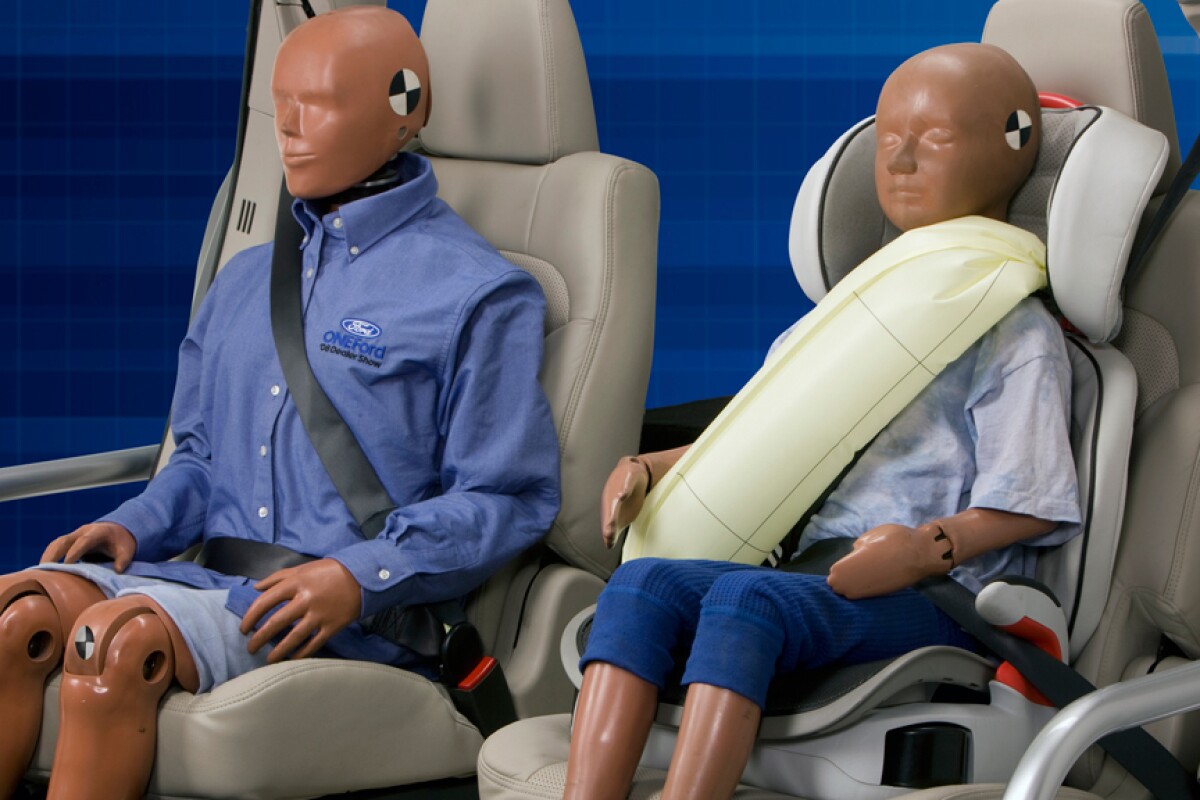Most seat belts are designed to stretch during a crash to reduce the force of impact on the wearer while still preventing contact with the interior of the vehicle. Ford has gone one step further with plans to introduce inflatable seat belts designed to reduce the pressure on the chest and help control head and neck motion in rear seat passengers, spreading the crash force across five times more of the occupant’s torso than conventional seat belts.
Unlike conventional airbags found in other parts of the car that inflate through a rapid chemical reaction triggered by an igniter, the seatbelts’ tubular air bag inflates with cold compressed gas, which flows through a specially designed buckle from a cylinder housed below the seat. The inflatable belt’s accordion-folded bag breaks through the belt fabric as it fills with air, expanding sideways across the occupant’s body in about the same amount of time it takes a car traveling at highway speed to cover a yard of distance.
The use of cold compressed gas instead of a heat-generating chemical reaction means the inflated belts feel no warmer on the wearer’s body than the ambient temperature. The inflatable belts are also able fill at a lower pressure and a slower rate than traditional air bags, because the device does not need to close a gap between the belt and the occupant. After deployment, the belt remains inflated for several seconds before dispersing its air through the pores of the air bag.
In everyday use, the inflatable belts operate like conventional seat belts and are safe and compatible with infant and children safety car and booster seats. In Ford’s research, more than 90 percent of those who tested the inflatable seat belts found them to be similar to, or more comfortable than a conventional belt because they feel padded and softer.
Ford will introduce inflatable rear seat belts on the next-generation Ford Explorer, which goes into production next year for the North American market. Over time, Ford plans to offer the technology in vehicles globally.
Via Jalopnik







